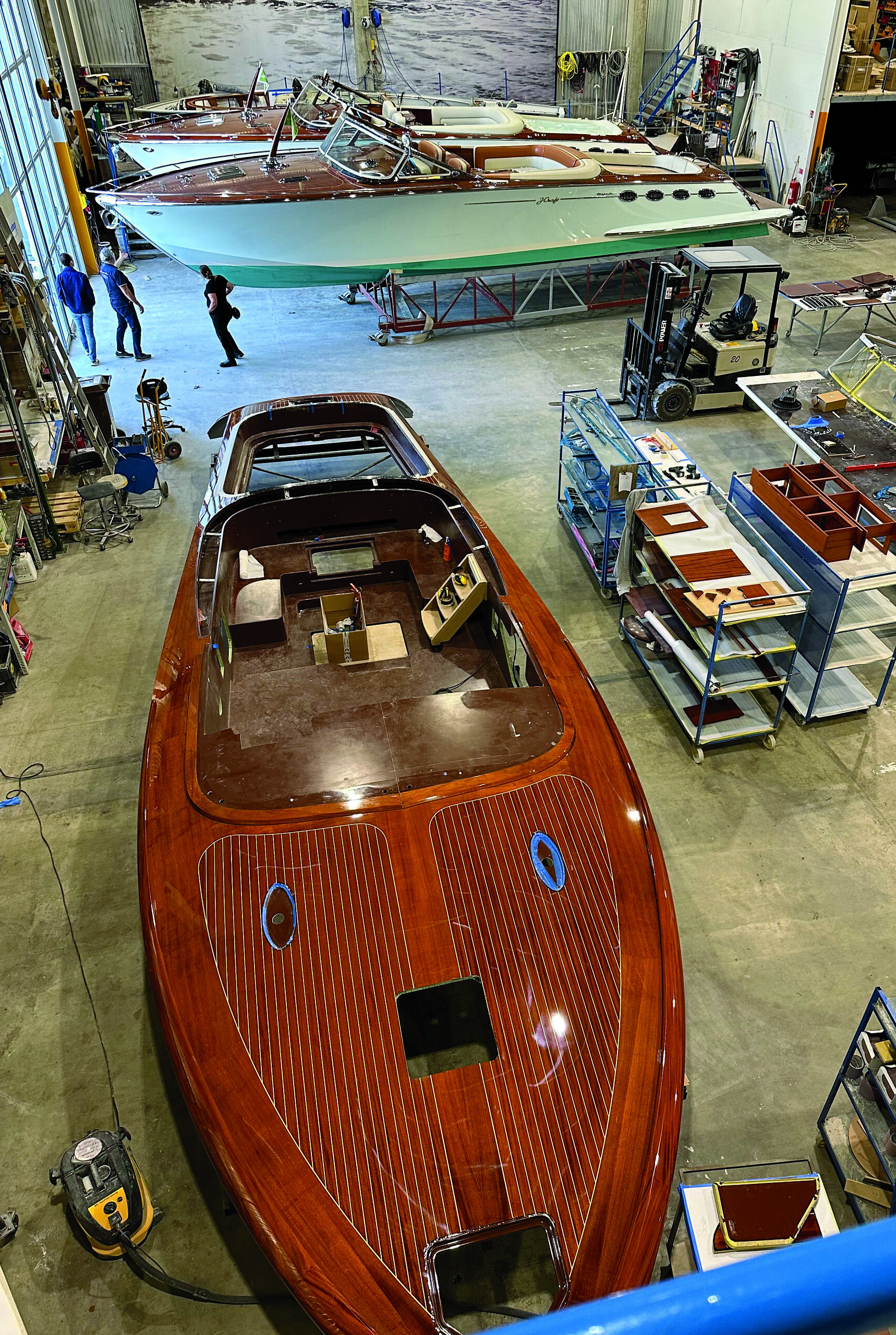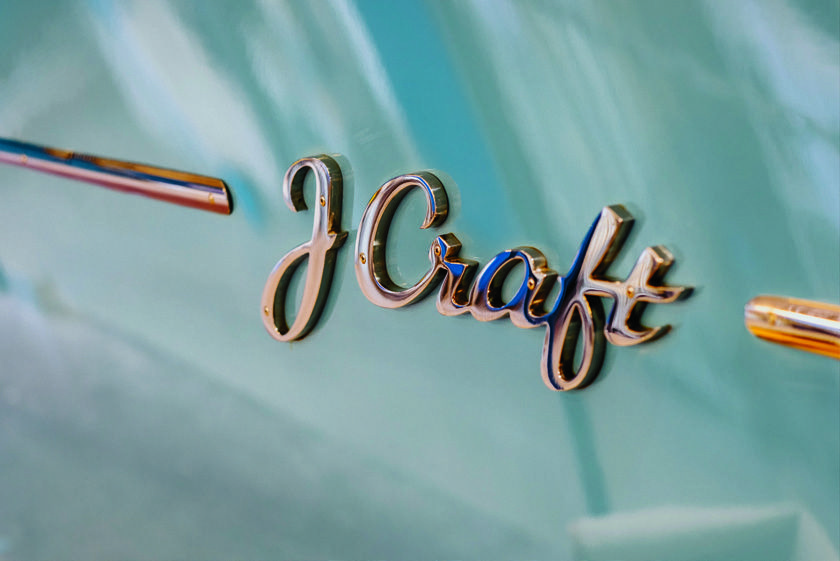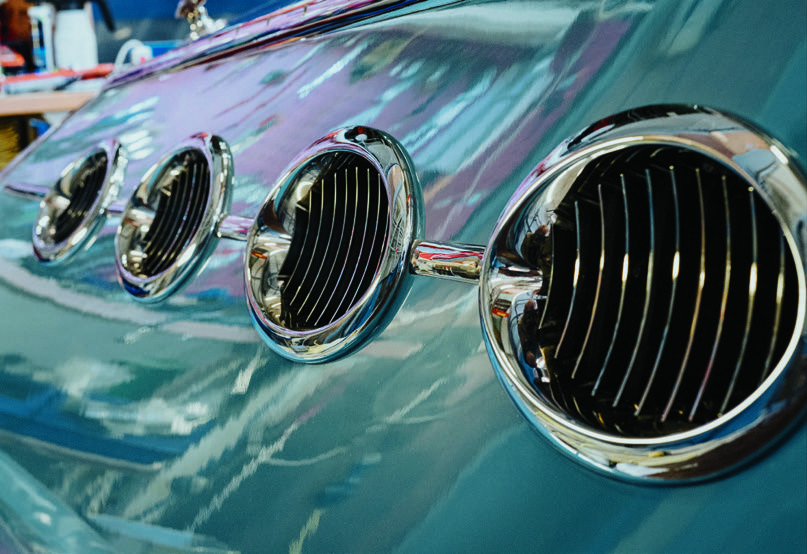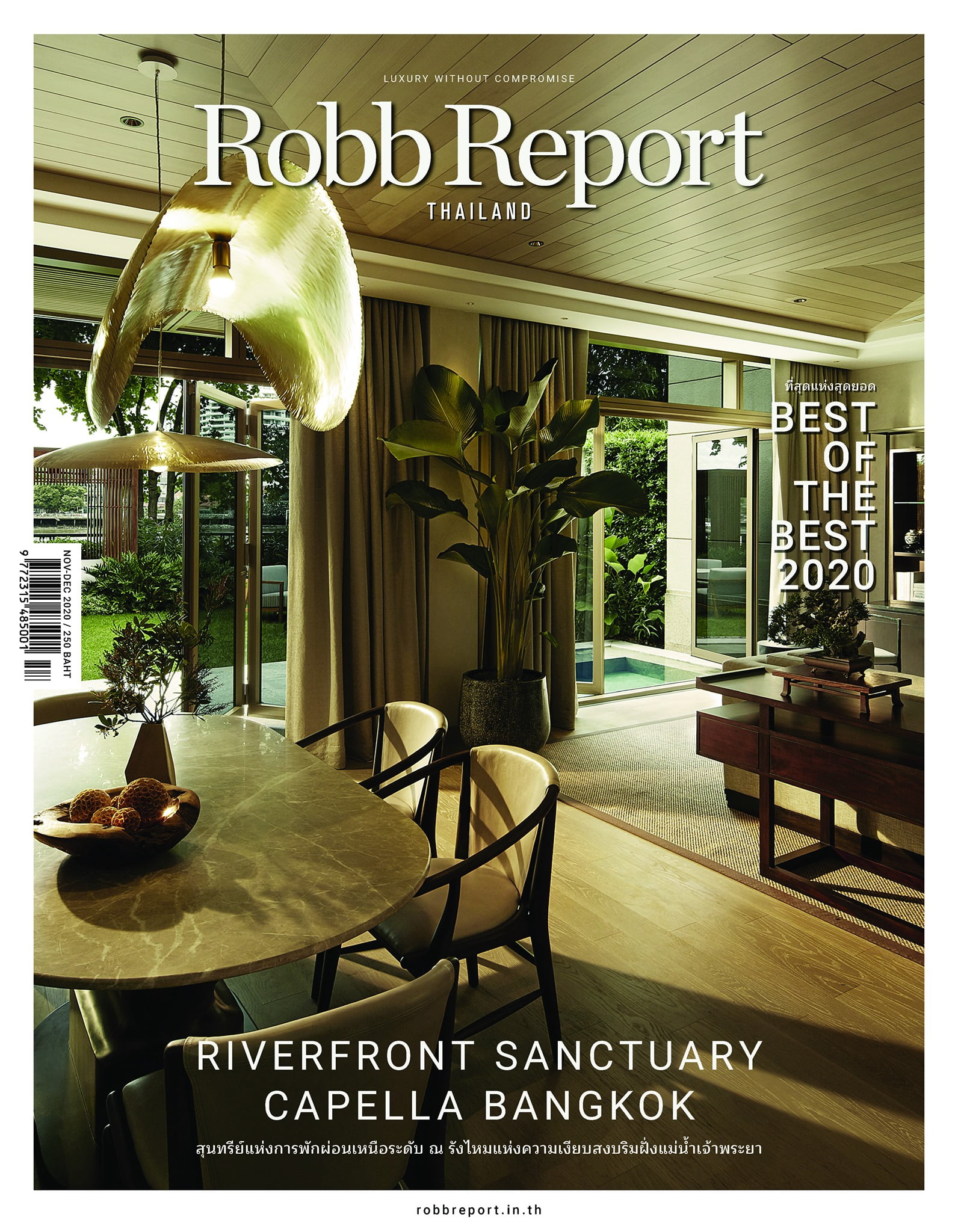เกาะกอทแลนด์ (Gotland) ยังคงเปี่ยมไปด้วยจิตวิญญาณของชาวไวกิ้ง ไม่ว่าจะเป็นหลุมศพนักเดินเรือยุคกลางที่ฝังอยู่ใต้ถนนถนนลาดหินในเมืองวิสบี้ (Visby) หรือซากปรักหักพังของอู่ต่อเรือไวกิ้งที่เคยใช้สร้างเรือล่องน้ำ (longboats) เมื่อ 1,000 ปีที่แล้ว เรื่องราวทางทะเลโบราณเหล่านี้ได้หลอมรวมกลายเป็นเสน่ห์ของเกาะแห่งนี้ ชุมชนเก่าแก่ที่ถูกล้อมรอบกำแพงเมือง เคยรุ่งเรืองจากการค้าขายหนังกระรอกและขี้ผึ้ง จนถึงทุกวันนี้ เรือประมงขนาดเล็กยังคงแล่นระหว่างเกาะกับแผ่นดินใหญ่ ซึ่งอยู่ห่างกันประมาณ 56 ไมล์อย่างสม่ำเสมอ
“ชาวเกาะกอทแลนด์ดำรงชีวิตอยู่กับท้องทะเลมาโดยตลอด" Johan Hallén ผู้เติบโตบนเกาะแห่งนี้ กล่าว Hallén บูรณะเรือลำแรกของเขาตั้งแต่อายุ 15 ปี รับราชการในกองทัพเรือสวีเดนเป็นนักดำน้ำเก็บกู้วัตถุระเบิด และต่อมาเขาใช้เวลากว่า 3 ปี ในฐานะเจ้าหน้าที่ฝึกสอนเฉพาะทางด้านการจัดการเรือรบ ปัจจุบัน Hallén ดำรงตำแหน่งหัวหน้าฝ่ายเทคนิค และเป็นพนักงานที่อยู่กับบริษัท J Craft มานานที่สุด J Craft คืออู่ต่อเรือขนาดเล็กที่สร้างชื่อเสียงโด่งดังอย่างไม่น่าเชื่อ โดยส่งเรือยนต์รุ่น Torpedo ขนาด 42 ฟุต ที่ขึ้นชื่อในเรื่องความพิถีพิถัน ไปยังริเวียร่าฝรั่งเศสเป็นส่วนใหญ่
Björn Jansson ก่อตั้ง J Craft ขึ้นในปี 1999 ด้วยความตั้งใจที่จะสร้างเรือยอชท์ที่สวยงาม โดยได้รับแรงบันดาลใจมาจากเรือ Riva Aquarama อันหรูหราของยุค 1960s วิสัยทัศน์ของเขาคือการสร้างเรือที่มีเนื้อไม้มะฮอกกานีขัดเงา แต่ใช้ตัวเรือเป็นไฟเบอร์กลาสที่แข็งแรง เพื่อให้สามารถล่องไปในทะเลบอลติกที่เต็มไปด้วยคลื่นลมได้อย่างคล่องแคล่ว ในปี 2000 Jansson, Hallén และช่างฝีมือท้องถิ่นอีกไม่กี่คน ได้ส่งมอบเรือ J Craft ลำแรก ซึ่งเป็นเรือสำราญขนาด 38 ฟุต ชื่อว่า Polaris ให้แก่ลูกค้าคนแรกคือ King Carl XVI Gustaf แห่งสวีเดน
มีเรือเพียง 29 ลำเท่านั้นที่ออกจากอู่ต่อเรือแห่งนี้ ซึ่งเป็นเครื่องหมายการค้าที่บ่งบอกถึงการผลิตเรืออย่างพิถีพิถัน ตัวอย่างเรือที่มีชื่อเสียง ได้แก่ Bourik เรือ tender ให้กับเรือ Dilbar ขนาด 512 ฟุต และ Tonic Express เรือ tender ให้กับเรือ Pink Gin ขนาด 131 ฟุต แต่เรือส่วนใหญ่สร้างเป็นเรือสำราญสำหรับวันหยุดสุดสัปดาห์ให้กับเจ้าของทั่วโลก การต่อเรือแต่ละลำต้องใช้เวลากว่า 9,000 ชั่วโมง ใช้แลคเกอร์เคลือบเงาถึง 20 ชั้นบนเนื้อไม้มะฮอกกานี จากแอฟริกาตะวันตกเป็นจำนวนหลายร้อยแผ่น อาศัยประสบการณ์อันยาวนานรวม 223 ปีของพนักงาน 12 คนในอู่ต่อเรือ
ถ้ามองมาจากถนน บริษัท J Craft ดูคล้ายกับร้านซ่อมรถยนต์ธรรมดาๆ ไม่ได้เผยให้เห็นถึงงานฝีมืออันประณีตที่อยู่ภายใน เมื่อเข้าไปด้านใน จะได้กลิ่นของแลคเกอร์และไม้สด แต่ไม่มีกลิ่นฉุนของเรซินหรือเสียงเครื่องจักรหนัก ตัวเรือ Torpedo หมายเลข 22 ที่กำลังสร้างเพื่อส่งไปยังสหรัฐอเมริกา ตั้งอยู่ภายในโรงงานพร้อมกับสายไฟที่ยังโชว์อยู่ ส่วนพื้นเรือวางอยู่ห่างออกไปประมาณ 30 ฟุต ล้อมรอบด้วยทีมงานที่กำลังขัดไม้มะฮอกกานีด้วยกระดาษทรายละเอียด 800 Grit ขณะเดียวกัน เรือ Zens ที่สร้างเสร็จแล้ว ก็ถูกเก็บไว้ที่นี่เพื่อรอฤดูหนาว ด้วยตัวเรือสีเทอควอยซ์ที่เปล่งประกาย แสดงให้เห็นภาพความสมบูรณ์ของกระบวนการต่อเรือ
ภายในอาคารขนาด 25,000 ตารางฟุต มีการจัดเก็บไม้มะฮอกกานี ไม้สัก และไม้สน ที่ยังไม่ได้ตัด รวมถึงห้องพ่นสี และแผนกไฟเบอร์กลาสที่มีวัสดุสำเร็จรูปอื่นๆ ที่เตรียมเอาไว้เพียงพอสำหรับสร้างตัวเรือใหม่สองลำ ในปี 2008 J Craft ได้นำเทคนิค Vacuum Infusion มาใช้ ซึ่งเป็นวิธีการที่สะอาดและแม่นยำยิ่งขึ้นในการนำเรซิ่นรีไซเคิลเข้ากับไฟเบอร์กลาสสำหรับตัวเรือโค้ง โดยเทคนิคนี้ “ช่วยเร่งกระบวนการผลิต และรองรับการเปลี่ยนแปลงได้อย่างรวดเร็ว" ตามที่ Johan Hallén กล่าว

แต่ยังคงมีการใช้เทคนิคแบบเก่าๆ ตัวอย่างเช่น แผ่นไม้มะฮอกกานี ที่จะนำมาประกอบเป็นหัวเรือ จะถูกดัดโค้งด้วยไอน้ำ ซึ่งเป็นเทคนิคที่สืบทอดมาตั้งแต่สมัยไวกิ้ง ความมุ่งมั่นในงานฝีมือยังคงไม่เปลี่ยนแปลงไปตั้งแต่ Jansson และ Hallén เริ่มต้นกิจการ แต่การนำเอาการออกแบบและวิศวกรรมรุ่นใหม่มาใช้ นั้นมีการเปลี่ยนแปลงอย่างแน่นอน โดยเฉพาะอย่างยิ่งนับตั้งแต่ Radenko Milakovic ผู้จัดการกองทุนป้องกันความเสี่ยง เข้าซื้ออู่ต่อเรือแห่งนี้ในปี 2008 “ผมมองตัวเองเป็นผู้พิทักษ์" Milakovic กล่าว ผู้หลงใหลในเรือ J Craft หลังจากได้เช่าเรือรุ่นหนึ่งมาล่องทะเลเมดิเตอร์เรเนียน “นั่นหมายความว่าต้องปกปักรักษาจิตวิญญาณของ J Craft ไว้ แต่ในขณะเดียวกันก็ต้องพัฒนาเทคนิคด้านวิศวกรรมให้ก้าวหน้าขึ้น"
Milakovic ยุติการผลิตเรือรุ่น Cabrio Cruiser และเปิดตัวเรือ Torpedo ลำแรก คือ La Decadence ในปี 2009 โดยเปลี่ยนเครื่องยนต์คู่ Yanmar มาเป็นเครื่องยนต์คู่ Volvo Penta IPS 650-RS ระบบขับเคลื่อนแบบ IPS pod ไร้หางเสือ และระบบควบคุมด้วยจอยสติ๊ก ทีมงานได้ร่วมมือกับสถาปนิกเรือของ Volvo เพื่อปรับปรุงการออกแบบตัวเรือ Torpedo ให้มีความคล่องแคล่วและประสิทธิภาพมากขึ้น ด้วยระบบขับเคลื่อนใหม่นี้ ความเร็วสูงสุดเพิ่มขึ้น 20 เปอร์เซ็นต์ เป็น 47 นอต ในขณะที่อัตราการสิ้นเปลืองน้ำมันลดลง 30 เปอร์เซ็นต์ ปัจจุบันเรือสามารถแล่นได้ไกลประมาณ 280 นอติคัลไมล์ ที่ความเร็ว 30 นอต
Radenko Milakovic ผู้จัดการกองทุนป้องกันความเสี่ยง ผู้หลงใหลในสไตล์อิตาเลียนยุค 60 ได้มุ่งเน้นการออกแบบห้องนักบังคับ (cockpit) ด้วยการนำเอาคุณสมบัติเด่นของรถยนต์คลาสสิคมาประยุกต์ใช้เพื่อยกระดับความหรูหราย้อนยุค แผงควบคุมแบบอนาล็อก ตำแหน่งพวงมาลัยด้านซ้าย และแม้แต่พวงมาลัย Nardi ซึ่งออกแบบมาสำหรับ Ferrari 250 GTO ล้วนสร้างบรรยากาศที่ต้องการได้อย่างลงตัว “ทีมงานเรียนรู้หลายสิ่งหลายอย่างจากเรือรุ่น Cabrio แต่ Torpedo คือวิวัฒนาการที่แท้จริง" เขากล่าวเสริมว่าเรือรุ่นนี้ “ชวนให้นึกถึง Chevrolet Corvette ปี 1957 แต่มีความทนทานสำหรับการเดินทางไกล เช่น ไมแอมีไปบาฮามาสและกลับ"
เรือ Torpedo แต่ละลำ มีราคาเริ่มต้นที่ประมาณ 1.75 ล้านดอลลาร์ ลูกค้าสามารถปรับแต่งได้อย่างหลากหลาย ไม่เพียงแค่เลือกสีตัวเรือ (ซึ่งมักจะเป็นสีสันสดใส) แต่ยังรวมไปถึงอุปกรณ์ต่างๆ เช่น กระเป๋าเดินทางที่เข้าชุด เตาย่างเทปปันยากิ ระบบเสียง 2,000 วัตต์ กล่องเก็บซิการ์แบบ Z-box และชุดปิกนิกเงินสเตอร์ลิง (ทางอู่ต่อเรือปฏิเสธคำขอติดตั้งปืนกล Gatling บนหัวเรืออย่างสุภาพ) ภายในเรือมีห้องนอนสองห้อง ตกแต่งด้วยไม้มะฮอกกานีเช่นเดียวกับห้องนักบังคับ โดยลูกค้าสามารถเลือกปรับแต่งเพิ่มเติมด้วยผ้า Hermès หรือ Loro Piana หรือหนังที่ชื่นชอบ แถม “บัลลังก์" ซึ่งเป็นโถชำระไม้มะฮอกกานีสุดหรู ยังทำหน้าที่เป็นที่นั่งอาบน้ำได้อีกด้วย
ระหว่างการทดลองใช้งานบนทะเลบอลติค ซึ่งเป็นช่วงที่ค่อนข้างหนาวและมีคลื่นลมแรง เรือ Zens ได้แสดงให้เห็นถึงความแข็งแกร่ง ด้วยการผสมผสานระหว่างตัวเรือที่เหมาะกับการล่องทะเล และฝีมืออันชาญฉลาดของ Zoltan Antunovic ผู้ควบคุมเรือ หลังจากฝ่าคลื่นสูงแปดฟุต เรือได้แล่นอย่างราบรื่นภายในแนวกันคลื่นของท่าเรือ โดยควบคุมการเดินเรือในน้ำนิ่งสงบด้วยจอยสติ๊ก ก่อนที่เรือจะแล่นอย่างว่องไวไปยังท่าเรืออย่างนุ่มนวล ลูกค้าเป้าหมายของเรือ J Craft นั้นกว้างกว่าที่คิด ผู้ชายอย่าง Leif Erikson นักสำรวจชาวนอร์ส และ Federico Fellini ผู้กำกับภาพยนตร์ชาวอิตาลี ก็เป็นผู้หลงใหลเรือรุ่นนี้เช่นกัน
จากบทความโดย Julia Zaltzman

Viking grit still runs strong throughout Gotland. From medieval sailors buried beneath the cobblestone streets in Visby to the ruins of Norse shipyards where longboats were built 1,000 years ago, ancient maritime lore suffuses the island. The old walled community once thrived trading squirrel skins and beeswax, and to this day small fishing vessels make regular runs between the isle and the mainland, a distance of about 56 miles.
“The people of Gotland have always made their living by the sea," says Johan Hallén, who grew up here, renovated his first boat at the age of 15, served in the Swedish navy as a mine diver, and later spent three years as a training officer specializing in battleship management. These days, Hallén is the chief technical officer—and the longest-serving employee—at J Craft, an unlikely boutique yard that sends the lion’s share of its meticulously crafted 42-foot Torpedo models to the French Riviera.
Björn Jansson founded J Craft in 1999, intent on building a stunning yacht inspired by the gleaming Riva Aquaramas of the 1960s. His vision was to create boats with finely varnished mahogany topsides but far more seaworthy fiberglass hulls, making them capable of running the rough waters of the surrounding Baltic. In 2000, Jansson, Hallén, and a handful of other local craftsmen and carpenters delivered the first J Craft, a 38-foot Cabrio Cruiser named Polaris, to its inaugural customer: King Carl XVI Gustaf of Sweden.
Only 29 boats have emerged from the yard—a hallmark of its select build ethos. Some notable examples include Bourik, tender to 512-foot Dilbar, and Tonic Express, tender to 131-foot Pink Gin, but most are weekend cruisers for owners around the world. Each project requires 9,000 hours of labor, 20 layers of varnish on hundreds of board feet of West African mahogany, and the 223 years of combined experience represented by the yard’s 12 workers.
Seen from the street, the facility resembles an unassuming auto repair shop, revealing nothing of the artisanship it houses. Inside, the aromas of varnish and fresh-cut wood are ever present, but there’s no overpowering stench of resin or the sounds of heavy machinery. Destined for the U.S., Torpedo hull No. 22 sits in the workshop with wiring exposed while its deck rests 30 feet away, surrounded by a team sanding the mahogany with 800-grit paper. Then there’s the completed Zens, here for overwintering—a visual bookend to the process with its polished turquoise hull at full gleam.
Long, uncut boards of mahogany, teak, and spruce are stacked in one section of the 25,000-square-foot building, a space that also includes the paint booth and a fiberglass department with enough preprepared composites for a pair of new hulls. In 2008, J Craft adopted vacuum infusion, a cleaner, more precise way of introducing recyclable resin to fiberglass for the curved hulls, which “speeds up the process and allows for fast changes," according to Hallén.

But many old-world techniques are still employed. Take the mahogany strips that will comprise the foredeck: These are curved by steam, a practice that also dates back to the Vikings. The devotion to the craft hasn’t changed since Jansson and Hallén started the operation, but the implementation of next-generation design and engineering certainly has—at least since hedge-fund manager Radenko Milakovic bought the yard in 2008. “I see myself as its custodian," says Milakovic, who fell in love with J Craft after chartering one of its models in the Med. “That means safeguarding its spirit while making significant technical advances."
Milakovic shelved the Cabrio Cruiser and launched the first Torpedo, La Decadence, in 2009, swapping out the twin Yanmar configuration for twin Volvo Penta IPS 650-RS engines, a rudderless IPS pod system, and joystick controls. The team worked with Volvo’s naval architects, redesigning the Torpedo’s hull to improve seakeeping and performance. With the new propulsion setup, top speed jumped 20 percent, to 47 knots, while fuel consumption was lowered by 30 percent; the boat now has roughly 280 nautical miles of range at 30 knots.
Striving for a more ’60s Italian aesthetic, Milakovic also addressed the cockpit, mandating classic-automobile features to embellish the already vintage styling. An analog dashboard, a left-hand-drive position, and even a Nardi steering wheel—originally designed for Ferrari’s 250 GTO—impart the desired effect. “The team learned a lot from the Cabrios, but the Torpedo brought real evolution," he says, adding that the latter is “reminiscent of a ’57 Corvette but has the endurance to cover long distances—say, Miami to the Bahamas and back."
Starting at around $1.75 million, each Torpedo features customization that goes far beyond the selection of (often vibrant) hull colors to include items such as matching luggage, a teppanyaki grill, a 2,000-watt sound system, a Z-box humidor, and a sterling-silver picnic set; a request for a Gatling gun on the bow was politely declined. The two-stateroom interior is dressed in the same mahogany as the cockpit, often personalized with Hermès or Loro Piana fabrics or a favored leather. “The throne"—an elaborate mahogany commode—doubles as a shower seat in the head.
During a lively, cold, and quite wet sea trial on the Baltic, the offshore prowess of Zens was amply demonstrated via the combination of its seaworthy hull and master builder Zoltan Antunovic as pilot. After Zens was exercised through eight-foot seas, more genteel conditions were enjoyed behind the harbor seawall, finessing pirouettes in the calm water with the joystick before the boat glided nimbly to the dock. As for the ideal customer, that may be a surprisingly wide target: It’s easy to imagine Leif Erikson and Federico Fellini fighting for a turn at the helm.
From the article by Julia Zaltzman









